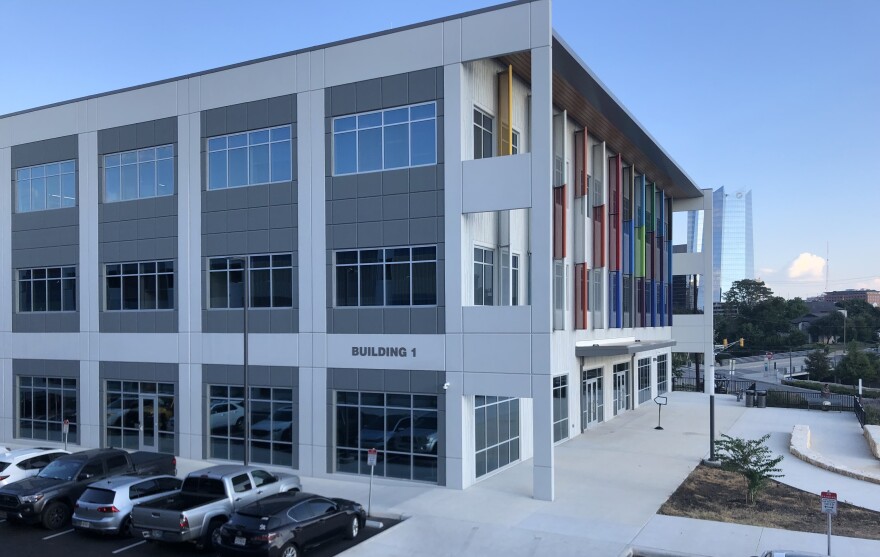The San Antonio Independent School District, like many districts in Bexar County and across Texas, plans to spend millions of dollars more than its expected revenue for the 2024-2025 school year.
SAISD’s board of trustees approved a $538 million budget for the general fund on Monday — nearly $54 million more than the district’s expected general fund revenue.
But Superintendent Jaime Aquino said money from another fund will be allocated to cover the deficit.
“We never adopt a deficit budget. Today you're not adopting a deficit budget. I say that because there's some misconception,” Aquino told trustees during the board meeting.
Districts across Texas have struggled to pass balanced budgets in recent years because inflation has increased costs but districts haven’t received an increase in funding. Many districts have also experienced a decline in enrollment and attendance, which also reduces how much funding they receive. Those struggles seem to be coming to a head this year.
Last week, NEISD trustees approved a nearly $63 million deficit budget. And Northside ISD is expected to approve a nearly $100 million deficit budget in August.
The Texas Legislature controls how much funding public schools receive, and it hasn’t increased per-student spending since 2019. A proposal to increase per-student funding during the 2023 legislative session failed after it was tied to a bill to create private school vouchers.
“I just want to make sure that the public understands that we are in a dire financial situation because Austin has put us where we are,” Aquino said Monday.
“We [cannot afford] the basic service of even offering our staff a decent salary or intervention teachers and support to two-thirds of our students who are not on grade level. It’s a crime and a sin,” he added.
“But that’s the reality when our basic [per student] allotment has not increased since 2019, despite an average of 22% inflation rate,” Aquino added. “I don’t want to be the bearer of bad news, but if something doesn’t happen, as a community we’re going to need to be prepared next year to make some cuts that will be painful.”
SAISD is halfway through a six-year sustainability plan to reduce costs and reallocate funds to better serve students, which CFO Dottie Carreon said has so far netted a $27.7 million reduction in recurring costs.
The district’s decision to close 15 school and continue considering closing schools in the future is part of this sustainability plan. So far, cuts have primarily been to central office staff. But without an increase in funding approved by state lawmakers, SAISD’s current sustainability plan still projects a deficit in three years.
The fund SAISD is using to cover its deficit this year is called the Strategic Initiative Fund. Earlier in the budget planning process, district officials said they created the Strategic Initiative fund with the help of federal COVID recovery dollars called ESSER.
But that funding is finite — all ESSER funding has been allocated to districts and districts are required to spend all of their ESSER money by the end of September unless they apply for an extension.
During board discussions, trustees mentioned that sometimes they hear about cuts that aren’t part of the budget they vote on.
A last-minute, $515,600 addition to the budget Monday appears to be in response to a concern about one of those cuts. The new funding will allow the district to continue offering after-school care to middle schoolers next year.
“We tend to hear from students and families when something is cut, or when they get notice that something's going to be cut. And then we're like, ‘Oh, I didn't know that was part of the budget that we've been discussing,’” Trustee Ed Garza said.
Aquino said the after-school program is funded through a grant from the City of San Antonio. Because labor costs have gone up, but the grant has stayed the same, SAISD would have had to limit the after-school program to elementary schoolers if the extra funding wasn’t approved.
But, Aquino warned, the middle-school after-school program has only been approved to continue for one more year.
“I hear from families and staff and from the board, ‘Don’t cut programs and services.' And we have to cut programs and services,” Aquino said. “There’s no other way unless Austin does something differently.”
“Part of my administration is trying to protect what we call the core. For us, the core is anything that happens within the school day. That's our first priority,” Aquino said. “But I do want to make sure that people understand that we are struggling even to offer the most basic services.”
Carreon said SAISD currently has $48 million in grants, not counting ESSER, and that grants, special education entitlements and federal Title I funds pay for roughly 12% to 15% of district staff.



